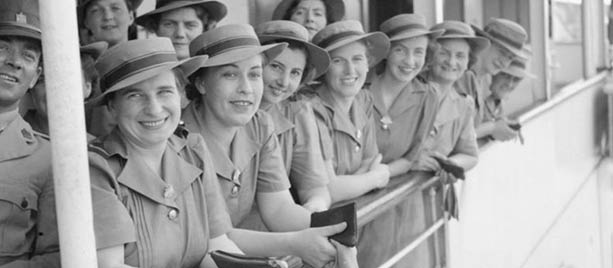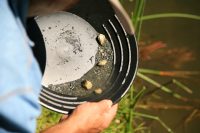John McNamee Reports On A
History-Making New Book
It was described as one of the worst tragedies ever to hit the nursing profession.
During World War II, a group of 65 Australian army nurses along with British civilians and military personnel had been evacuated after the fall of Singapore in 1942 only for their boat to be sunk by Japanese aircraft.
Twelve nurses died in that bombing attack but a group of survivors including 22 nurses, managed to use floating debris and lifeboats to make it to shore on Banka Island.
But a Japanese patrol was waiting for them. The nurses were lined up along the beach facing the sea.
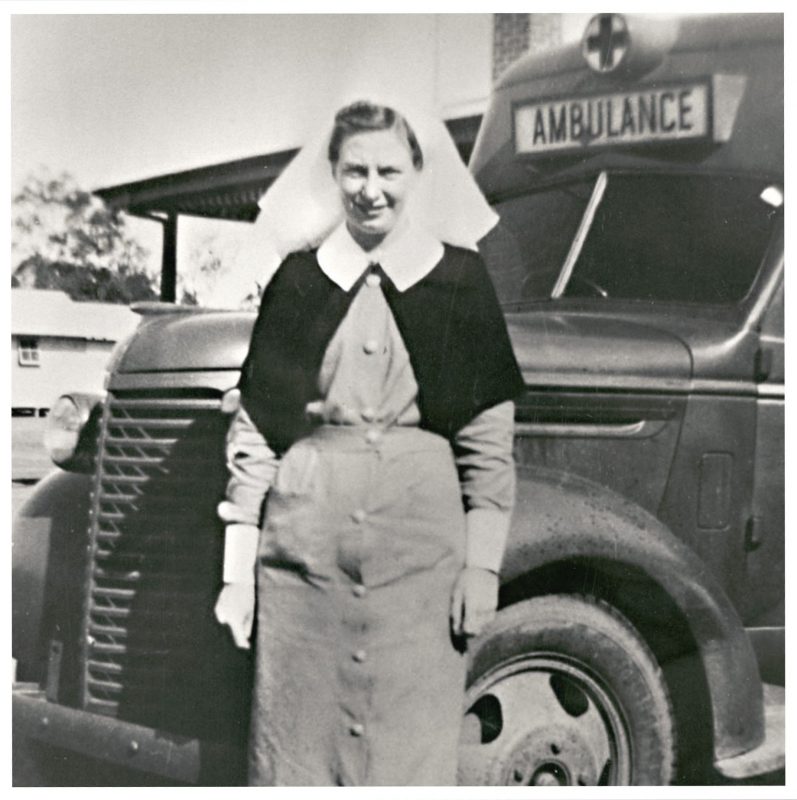
Some of the Japanese soldiers then herded the group of British male survivors at gunpoint further along the beach and around a headland.
The nurses heard gunfire and shortly afterwards the Japanese soldiers returned wiping blood from their bayonets.
The nurses were then ordered by the Japanese to form a line and walk into the sea. They knew what was going to happen but none panicked or pleaded for mercy.
Sister Vivian Bullwinkle was the only survivor of what became known as the Banka Island massacre.
In her own words she later described the tragic incident: “So we marched into the sea and when we got out to about waist level, they then machine-gunned us from behind. I was hit on the left side and the bullet just went straight through and came out the front.
“The impact of that and the waves, together with the fact that I thought once you were shot, you know, that you’d sort of had it. I overbalanced into the waves and just sort of lay limply there….I remained conscious and found that I wasn’t dying at all.
“Then my next fear was that the Japanese would see me moving because by this time I was being violently sick from having swallowed a fair amount of water….”
Luckily the soldiers marched off and surrounded by the bloodied bodies of her colleagues, Vivian, then aged 27, was able to scramble back to the beach. She was later found by another group of survivors who had not been seen by the enemy troops.
The amazing story of Vivian Bullwinkle is just one of many fascinating incidents recorded in a new book titled Nurses of Australia…. An Illustrated Story, by medical historian Deborah Burrows.
She told Go55s: “Like the one above, I was inspired by so many stories I discovered (in my research). I particularly appreciated those which emphasised the competence, ingenuity and self-reliance of Australian nurses.
“Another example was when a small group of Australian nurses were deposited on a bare hillside on the Greek island of Lemnos in 1915. They arrived before the hospital tents, equipment and supplies but still had to care for hundreds of desperately wounded soldiers from nearby Gallipoli. There was insufficient fresh water and for weeks they treated their patients in the open, on bare ground and when they ran out of bandages, they tore up their petticoats and carried on.”
Deborah’s book is unique in that it is the first time an extensive history of Australian nursing has ever been written.
In it she chronicles the very early days of nursing in the colony when nurses trained by the legendary Florence Nightingale, hero of the Crimean War (1853-1856), arrived to help out in the pioneering hospitals of the day.
“Yes, Florence Nightingale is usually known as the founder of modern nursing and set up the Nightingale School of Nursing at St Thomas’ Hospital in London in 1860.
“During the Crimean War and often despite the antagonism of the male doctors, she had insisted on the importance of sanitation, diet, clean conditions, and helped reduce the appalling death rate among the British soldiers…
“Her principles of training and practice were revolutionary but later became accepted as the gold standard and were widely copied.
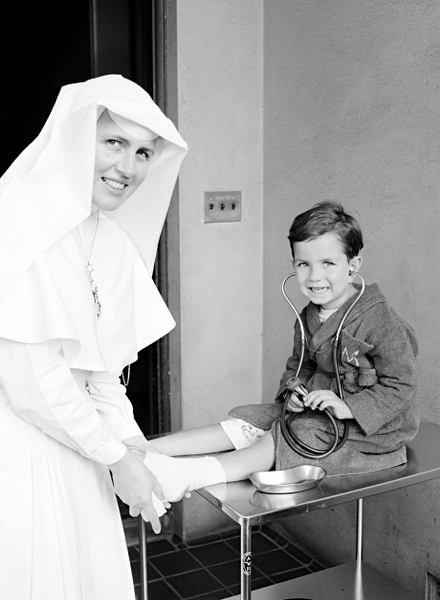
“The Nightingale nurses and Irish nuns who came over here in the early days often faced resistance and friction from the Catholic hierarchy but with the appointment of Sister Veronica O’Brien, St Vincent’s Hospital in Sydney remained a highly respectable institution.”
Deborah points out that medical knowledge and nursing treatments in the late 18th and early 19th centuries were often primitive and without any inkling of the role of bacteria in illness, ’tried and true’ household remedies such as starch or mustard poultices were often the usual treatment.
She says as soon as discoveries by scientists such as Koch and Pasteur led to the new era of scientific medicine, based upon bacteriology and germ theory, the duties of nurses were primarily infection control until the discovery of antibiotics changed medical treatment completely.
The book contains many vivid personal accounts often in the nurses’ own words of their trials and triumphs in their bush, wartime, mental health, aged care, midwifery and community nursing, along with the special bonds formed between fellow nurses and the racism indigenous nurses often experienced.
It also notes the changing social status of nursing and records the change in uniforms, as veils and capes disappear, hemlines are shortened and then replaced by scrubs.
“Nurses and midwives faced a tough battle for autonomy in their profession and the fight often centred on how they were viewed by the mainly male hierarchy…they had to battle hard to gain legal registration and later ensure that nurses’ registration boards in each state actually included trained nurses.
“I particularly greatly admired the Aboriginal nurses who overcame hardships and obstacles to train and work as nurses despite being told back in some states back in the 1940s that Aboriginal girls could not be accepted for nursing training.”
I asked Deborah if it was a difficult task chronicling all the history and collating the vast research which has gone into the book.
“I really enjoyed both researching and writing it in fact it was a delight.
“I was first approached by the National Library of Australia in 2015 and collaborated with the Australian College of Nursing and the Congress of Aboriginal and Torres Strait Islander Nurses and Midwives.
“I’ve always been interested in the topic and I took time off from my careers as a lawyer, novelist and historian to go to Oxford University and complete a Masters Degree in Medical History.
“As a lawyer, I was often involved in medical negligence claims and coronial inquests and over the years became familiar with the working of hospitals and often developed a close working relationship with many nurses.”
- Nurses of Australia – The Illustrated Story…by Deborah Burrows. NLA Publishing. Released November 2018. RRP $34.99.
- Vivian Bullwinkle survived the war, later becoming a Lieutenant-Colonel in the Australian Army Nursing Service, was awarded an AO and MBE and died aged 85 in Western Australia in 2000.
Main picture: A group of Australian Army nurses wait to disembark from a hospital ship on arrival at Singapore,Australian Nurses in Singapore, October 1941,War Office official photographer, Palmer (Lt), War Office Second World War Official Collection, United Kingdom Government, sourced from Wikimedia.
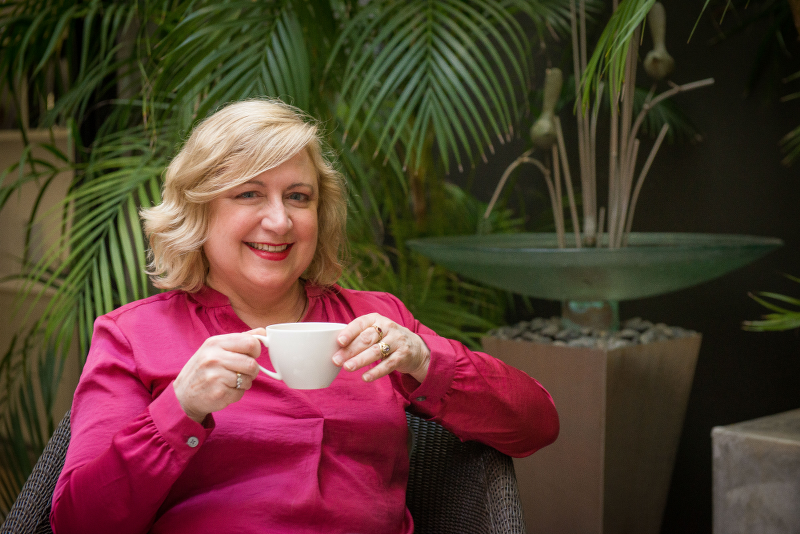 |
|
About The Author Deborah Burrows is a researcher, medical historian and a practicing lawyer. She has written six novels set in World War II and her popular My Ambulance Girls trilogy (Ebury Press, Penguin Australia) centres around women ambulance drivers in the London Blitz. |


